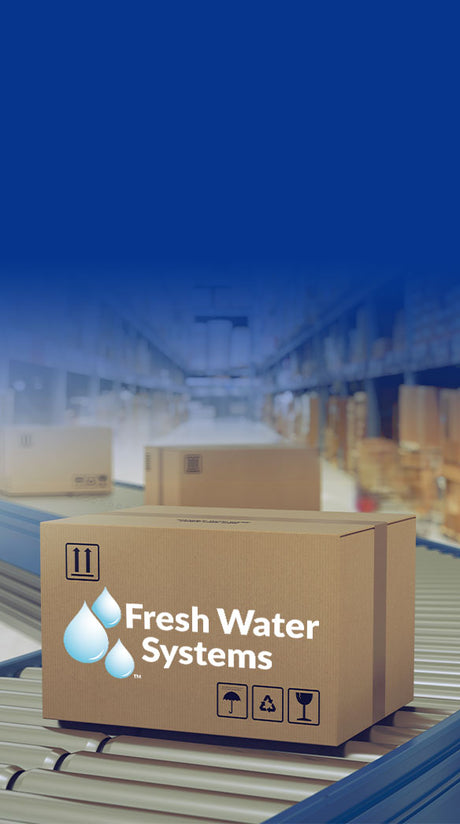Hard Water & Scale Control Systems
Southeastern Filtration & Equipment Systems
Regular price $168.05 Unit priceUnit price /UnavailableVery low stockPart #: SC-605-HW
- Regular price From $119.32 Unit priceUnit price /UnavailableLow stock
Part #: AP43011
Save up to 3% with bulk pricing - Regular price From $539.53 Unit priceUnit price /UnavailableVery low stock
Part #: M8409-HO
Southeastern Filtration & Equipment Systems
Regular price $260.80 Unit priceUnit price /UnavailableVery low stockPart #: HBW
Southeastern Filtration & Equipment Systems
HydroBlend SC-605-CW 5" Corrosion Control Filter System 3/4"
Regular price $168.05 Unit priceUnit price /UnavailableVery low stockPart #: SC-605-CW
- Regular price $120.99 Unit priceUnit price /Unavailable
Part #: SS-10-INSTALL
- Regular price From $1,381.71 Unit priceUnit price /Unavailable
Part #: WHS-CHLORINE-250
- Regular price From $1,177.79 Unit priceUnit price /Unavailable
Part #: WHSFC-CHLORINE-250
- Regular price $895.95 Unit priceUnit price /UnavailableVery low stock
Part #: MT56/16MB-32B
-

Get a Quote
Fast, Free, Custom
- Regular price From $2,163.71 Unit priceUnit price /Unavailable
Part #: WHSUV-CHLORINE-250
- Regular price $2,042.86 Unit priceUnit price /Unavailable
Part #: ETREATWCS
- Regular price From $1,152.53 Unit priceUnit price /Unavailable
Part #: WHSFC-CHLORINE-100
- Regular price From $1,045.69 Unit priceUnit price /Unavailable
Part #: WHS-CHLORINE-100
- Regular price $659.99 Unit priceUnit price /UnavailableSold out
Part #: 5600EM-100-WSSP34-BK
- Regular price $624.99 Unit priceUnit price /UnavailableSold out
Part #: WSFTC150
- Regular price $699.99 Unit priceUnit price /UnavailableSold out
Part #: 5600EM-150-WSSP34-BK
- Regular price $693.93 Unit priceUnit price /UnavailableSold out
Part #: 5600MM-250-WSS
- Regular price $749.99 Unit priceUnit price /UnavailableSold out
Part #: 5600EM-200-WSSP34-BK
- Regular price $599.99 Unit priceUnit price /UnavailableSold out
Part #: WSFTC100
- Regular price $628.24 Unit priceUnit price /UnavailableSold out
Part #: 5600MM-150-WSS
- Regular price $693.93 Unit priceUnit price /UnavailableSold out
Part #: 5600MM-200-WSS
- Regular price $799.99 Unit priceUnit price /UnavailableSold out
Part #: 5600EM-250-WSSP34-BK
Everpure Commercial
Regular price $892.36 Unit priceUnit price /UnavailablePart #: EV9799-10
-

MOST ORDERS OVER $89
FREE SHIPPING
AQA Total
Regular price $448.57 Unit priceUnit price /UnavailableSold outPart #: M711072327
- Regular price $445.00 Unit priceUnit price /UnavailableSold out
Part #: M711072328
Pentair Water
WATERTRUST Pro Series™ Whole House Carbon Filtration & Water Softening Combo System 35987
Regular price $2,912.18 Unit priceUnit price /UnavailablePart #: 35987
Want to learn more?
What is a water softener?
A water softener removes minerals like calcium and magnesium that create hard water before it enters your water heater or home. When hardness minerals combine with heat, scale forms and clogs plumbing pipes, water heaters, and other appliances. When combined with soap, calcium and magnesium form scum that accumulates on plumbing and fixtures and makes your skin dry and itchy, your hair lifeless, and your laundry dull.
What is hard water?
Water collects minerals from the soil as it flows through the deposits of calcium, magnesium, and other metallic elements in the ground. Water is an excellent solvent and dissolves these minerals that create scale and other problems lead to additional expenses and maintenance.
What are the disadvantages of hard water?
Hard water is not a health hazard, but it makes cooking, cleaning, or bathing difficult. The excess minerals in hard water clog your pores and dry your skin out; the mineral fades your clothes; and scum prevents easy cleanup. If you’re experiencing any of these symptoms, then you likely have hard water and need a water softener.
- • Scale accumulated on shower heads
- • Dingy dishes
- • Smoky glassware
- • Dry, itchy skin
- • Splitting hair
- • White rings on pots after boiling
- • Stiff, faded laundry
How to Soften Water
The best way to treat water hardness is to remove the minerals causing it, and an ion-exchange water softener is the easiest way to treat the problem. When a water softener removes calcium and magnesium, it remedies the symptoms of hard water. Scale inhibitors, like water heater filters or water conditioners, don’t remove minerals but hold them in a solution through a process called sequestration. The minerals in solution cannot break free and create scale. Scale inhibitors do not provide the benefits of softened water; they simply reduce scale buildup.
How Water softeners Work
A water softener has a tank full of resin beads seeking positively-charged ions. The beads capture calcium and magnesium, which stick to the resin beads, to remove hardness from water.
A water softener must regenerate once the resin beads are coated in hardness. Salt sits at the bottom of the brine tank in chunks or pellets. When water runs through the brine tank, it contacts the salt and creates a sodium solution called brine. The resin beads are bombarded with salt, so they surrender the calcium and magnesium ions and send them to the drain. Salt in the brine tank recharges the resin with sodium ions, so the softener is ready to treat water again.
Frequently asked questions: What is hard water? Are water softeners necessary? Are water softeners safe?
Visit our blog for the full list of FAQs about water softeners and answers to these questions or continue reading for more information.
Does a water softener reduce TDS?
A water softener does not reduce total dissolved solids (TDS). In fact, it adds dissolved solids to water, removing TDS after softening is most efficient. A water softener exchanges calcium and magnesium ions for sodium ions at a two-to-one ratio: two sodium ions for every mineral ion. The amount of sodium added to soft water is minimal but may concern those on a reduced sodium diet or mothers with babies on infant formula. A reverse osmosis system installed after a softener will remove any additional sodium from the water. Use a TDS meter to determine the amount of dissolved solids in your water after softening. Potassium chloride is an alternative to softener salt, but it’s three times as expensive and a maintenance nightmare. Potassium clumps easily, causing softener malfunction and additional brine tank cleaning.
How do high temperatures influence hard water?
Soft water is crucial for hot water heaters and appliances. The hotter the water, the faster the minerals precipitate out of solution and create scale. As water heats, hardness minerals accumulate directly onto the heating elements. The longer you go without softening the water, the thicker the scale will build up. Heating the water will take twice as long because the rock will have to heat before the water. Using hard water in water heaters, dishwashers, coffee brewers, and other hot water appliances ruins their efficiency.
Does a water distiller soften water?
Technically, yes. It removes hardness minerals like a softener, but it’s much less efficient. A distiller for your whole house would be enormous. It takes three hours to produce a gallon of from a countertop distiller. Imagine how long it would take to boil enough water for your household, turn it into steam, and then re-condense it into water to flush toilets or shower with.
How to Measure Water Hardness
To determine how hard your water is, contact your local municipal plant or conduct a water test kit or hard water test strips. Hard water is measured in grains per gallon (gpg) or parts per million (ppm). Learn how you can test your water at home.
- Determine how many grains of hardness your water contains.
- Determine how much water you use in your household in gallons.
- Multiply the two numbers together for the grains of hardness needing removed daily.
A water softener regenerates automatically based on how you program the control valve. You set your softer to regenerate depending on how much water will be softened and how much hardness will be removed.
How does iron affect water hardness?
If iron is in the ferric state (solid), then it sails right through the softener. If the iron is ferrous (dissolved), then it gets removed during softening. However, if you have iron in your water, you have to compensate for it by adding it to the total grains per gallon of hardness in a factor of three. If you have two ppm, you’d multiply it by three to get six. You would then set your softener to six gpg.
WQA Standard for Water Hardness
Measured in grains per gallon and parts per million
Soft: <1 gpg or <17 ppm
Slightly hard: 1 – 3.5 gpg or 17.1 - 60 ppm
Moderately hard: 3.5 - 7 gpg or 60 – 120 ppm
Hard: 7 – 10.5 gpg or 120 - 180 ppm
Very hard: >10.5 gpg or >180 ppm
Water Softener Maintenance
What is salt mushing in a water softener?
Salt mushing is caused by an oversaturation of salt that no longer creates brine. During regeneration, softener draws the solution out and runs it up the resin bed. Eventually, some salt may turn to mush and no longer saturate. High-efficiency softeners use softened water (less salt) rather than calcified water (more salt) to refill the brine tank to eliminate the need to worry about mushing.
What is bridging in a water softener?
Bridging occurs when water and salt mix together and create a layer of hardened salt that sits at the top of the brine tank. The softener continues to use salt below the top layer. The softener may appear to be full of salt when you look inside, but the salt underneath may be low or empty. Keeping the brine tank only half full eliminates bridging and still provides enough salt so the softener doesn’t run out. A high-efficiency water softer prepares the brine solution an hour before regeneration so the salt is used immediately and doesn’t accumulate.
How long should a water softener last?
With proper maintenance, a softer should last many years. Exactly how many depends on the quality of water coming in. Softener resin usually lasts seven to ten years, and valve seals last five to ten years.
Best Water Softener
Here’s what a guest had to say about this 5-star Neo-Pure water softener:
“Very satisfied with this softener and the service.
We purchased this to replace an old system... The installation went smoothly. Programming is easy. The videos are helpful. Very satisfied.” -- Herbert S.
Browse water softeners by brand: Neo-Pure | 3M
Browse all water filtration systems.





























